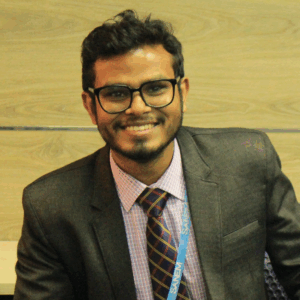Who Really Benefits? A Closer Look at Bangladesh’s Safety Nets
Ekramul Hasan
About a decade ago, the government allocated a budget of Tk. 35,975 Crore for social security programmes in FY 2015-16, which was roughly 14 percent of the total budget. Afterwards, the allocation has been gradually increasing over the years and the FY 2025-26 witnesses a significant increase of 3.27 times with a volume of Tk. 1,16,731 Crore, which is 14.78 percent of the national budget, revealing a more or less constant proportion which only deviated during the Covid-19 period, reaching as high as 19 percent in FY 2021-22. According to the World Bank’s State of Social Protection Report 2025, upper-middle-income countries spend more than 6 percent of their gross domestic product on social protection, compared with 3.7 percent in lower-middle-income countries and less than 2 percent in low-income countries. Whereas Bangladesh became a lower-middle-income country in July, 2015, the social protection budget did not increase proportionately, hovering around 2 percent of GDP. The scenario remained similar in the current FY with a total allocation that registers only around 1.87 percent of GDP.
Looking into how this budget reflects the government’s commitment to reducing poverty and vulnerability in the country, the social security programmes are classified in seven functional categories – Social Assistance, Social Insurance, General Subsidies, Labour Market Programme, Social Care Service, Community Development, and Technical Assistance – where Social Assistance has the largest impact in terms of addressing poverty and vulnerability and it carries by far the largest allocation – about 40.78 percent of the total social security budget, spread across 36 programmes. However, half of the budget (51.74 percent) is allocated to Social Insurance (30.36 percent) and General Subsidies (21.39 percent) categories, and their impact in alleviating poverty and vulnerability hardly justifies their sizes. For instance, Social Insurance is all about pension management, providing support to the households that are already well off. For the General Subsidies, however, 13.75 and 18.15 percent of the allocation are dedicated to Open Market Sale (OMS) and Food Friendly Programme (FFP), which have proven effective in offering support to vulnerable households. Nonetheless, the remaining 68.1 percent is allocated to agricultural subsidies, which completely exclude poor households who neither own land for cultivation nor cultivate others’ land—constituting approximately 11.3 percent of all households in the country. Additionally, this programme does not have any eligibility criteria for its beneficiaries rather follows a simple math, the more someone can afford the more benefit he gets. For instance, if a household buys more fertilizer, he gets a greater subsidy benefit out of it irrespective of his well-off status, and it is a no-brainer that only wealthier farmers buy in large volumes, not the poorer ones.
In addition to functional categories, the programmes are also categorized in nine lifecycle risk categories where Elderly category carries 39.56 percent of the total budget across seven programmes. At first glance, this figure suggests a strong commitment to elderly care; however, the question remains: who are the actual beneficiaries? Turns out, almost 90 percent of the category’s budget goes to those who are beneficiaries of either Freedom Fighter Allowance or Pension programmes. Whereas, the one true pro-poor programme under this category, Old Age Allowance (OAA), carries the remaining 10.38 percent and the number of beneficiaries has been stagnant, hovering around 6 million since FY 2021-22.
As we identified how a major portion of the safety net budget not very pro-poor, mistargeting worsens the situation, with the presence of both exclusion error (when eligible people are excluded) and inclusion error (when non-eligible people are included). For instance, OAA, Widow Allowance, and Disability Allowance programmes have an exclusion error of 25.03, 84.80, and 75.49 percent respectively and an inclusion error of 16.28, 26.47, and 56.07 percent respectively, according to HIES 2022. A positive development is that, in FY 2025-26, direct Government-to-Person (G2P) payments account for 40.05 percent of all social protection interventions, up from 35.70 percent in FY 2023-24, and out of 30 cash-based programmes, 29 are under G2P coverage. This strategic shift towards digitized cash delivery (leveraging Mobile Financial Services, Electronic Fund Transfer, and the National Payment Switch Bangladesh) has been instrumental in enhancing efficiency, transparency, and reducing mistargeting. However, targeting error still remains a grave concern for non-cash-based programmes, still about 22 percent of social benefits goes to the top 20 percent of households as highlighted in the White Paper on State of Bangladesh Economy, 2024.
While mistargeting is there, inadequacy of the benefit amount often makes the programmes, specially those under pro-poor categories, ineffective even if the targeting error is minimized. The flagship cash transfer programmes including OAA, Widow Allowance (WA), Mother and Child Benefit Programme (MCBP) and Disability Allowance (DA) used to provide a monthly support of only Tk. 600, Tk. 550, Tk. 800, and Tk. 900 respectively. With this year’s budget, we get to see an increase of only Tk. 50 for OAA and MCBP, and Tk. 100 for WA, appreciative but still far from being adequate. This inadequacy is ingrained with our safety net’s focus on horizontal expansion of the programme coverages while neglecting vertical expansion. As a result, coverage has been increased over the year, number of programmes reached as high as 140. The HIES 2022 data showing coverage of 37.6 percent of the households where national poverty rate is only 18.7 percent, theoretically meaning all the poor people are covered while they are clearly not. Good thing is that, this year, the number of programmes has been reduced from 140 in 2024-25 to 95 in 2025-26 to concentrate resources on a smaller number of priority schemes addressing lifecycle risk. Urban-rural disparities in social security coverage add another layer of complexity. Urban areas, despite their growing prevalence of poverty, receive less attention compared to rural regions. According to HIES 2022, while 44 percent of the rural households are benefitting from at least one programme, for urban households the number is only 23.9 percent.
Hence, along with the timely use of G2P, a few other important steps also need to be taken to make the social protection system more effective and fair. First, the government should allocate more money to programmes that directly help poor people. Currently, a big part of the budget goes to pensions and subsidies that mostly benefit better-off groups. Another key issue is that the benefit amounts are too low. While more people are covered now, the support they get is often not enough to make a real difference. The government should increase the benefit amounts gradually so that they match the rising cost of living. At the same time, improving the targeting system is very important. Using better data, community checks, and clear complaint systems can help make sure that only the right people get the support. Additionally, the government should design specific safety nets for urban poor, such as informal workers and slum dwellers, by working closely with local governments and NGOs.
Author’s Biography:
 Ekramul Hasan is a development researcher with a portfolio expanding from social protection programmes, poverty, labor markets to youth, climate, and energy sector. He holds both an Honors and a Master’s degree in Economics from the University of Dhaka. While his core strength lies in quantitative and analytical work, he is also well-versed in qualitative methods. Currently, Ekram is working as a consultant at the World Bank, where he works with multiple teams and contributes to poverty, social protection, and labor market-related analytical work and supports project preparation efforts—drafting TAPP— collaborating closely with government counterparts.
Ekramul Hasan is a development researcher with a portfolio expanding from social protection programmes, poverty, labor markets to youth, climate, and energy sector. He holds both an Honors and a Master’s degree in Economics from the University of Dhaka. While his core strength lies in quantitative and analytical work, he is also well-versed in qualitative methods. Currently, Ekram is working as a consultant at the World Bank, where he works with multiple teams and contributes to poverty, social protection, and labor market-related analytical work and supports project preparation efforts—drafting TAPP— collaborating closely with government counterparts.


